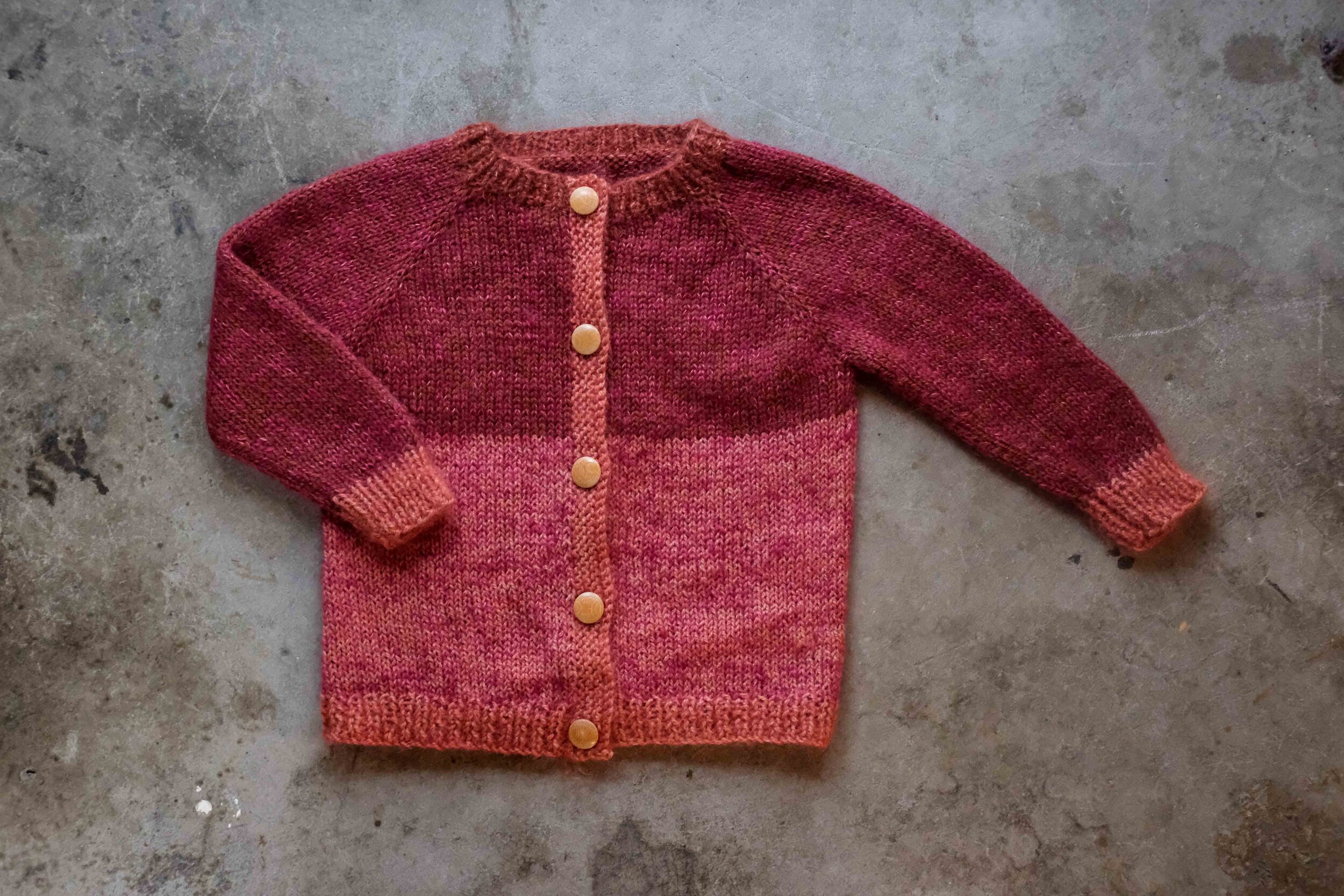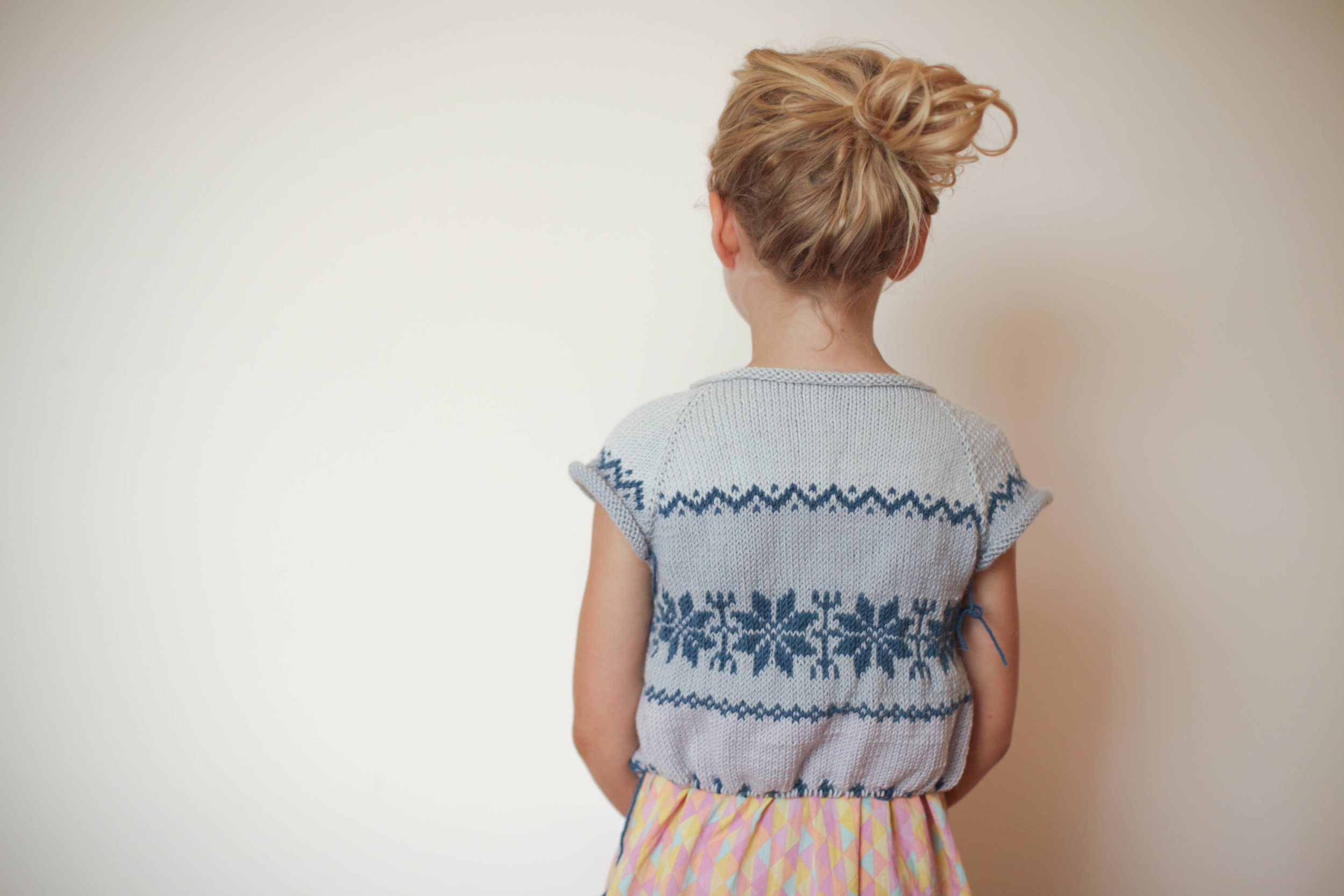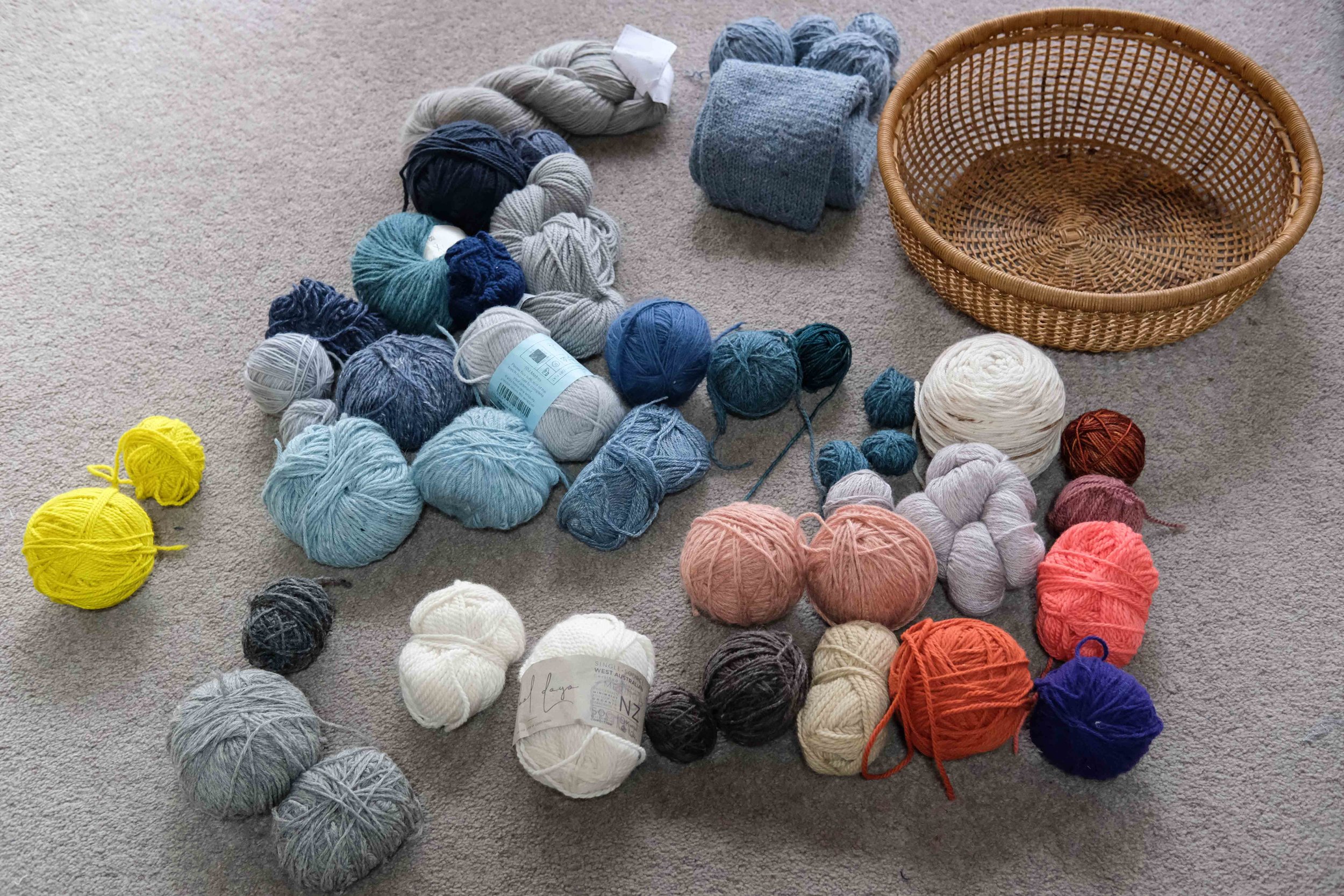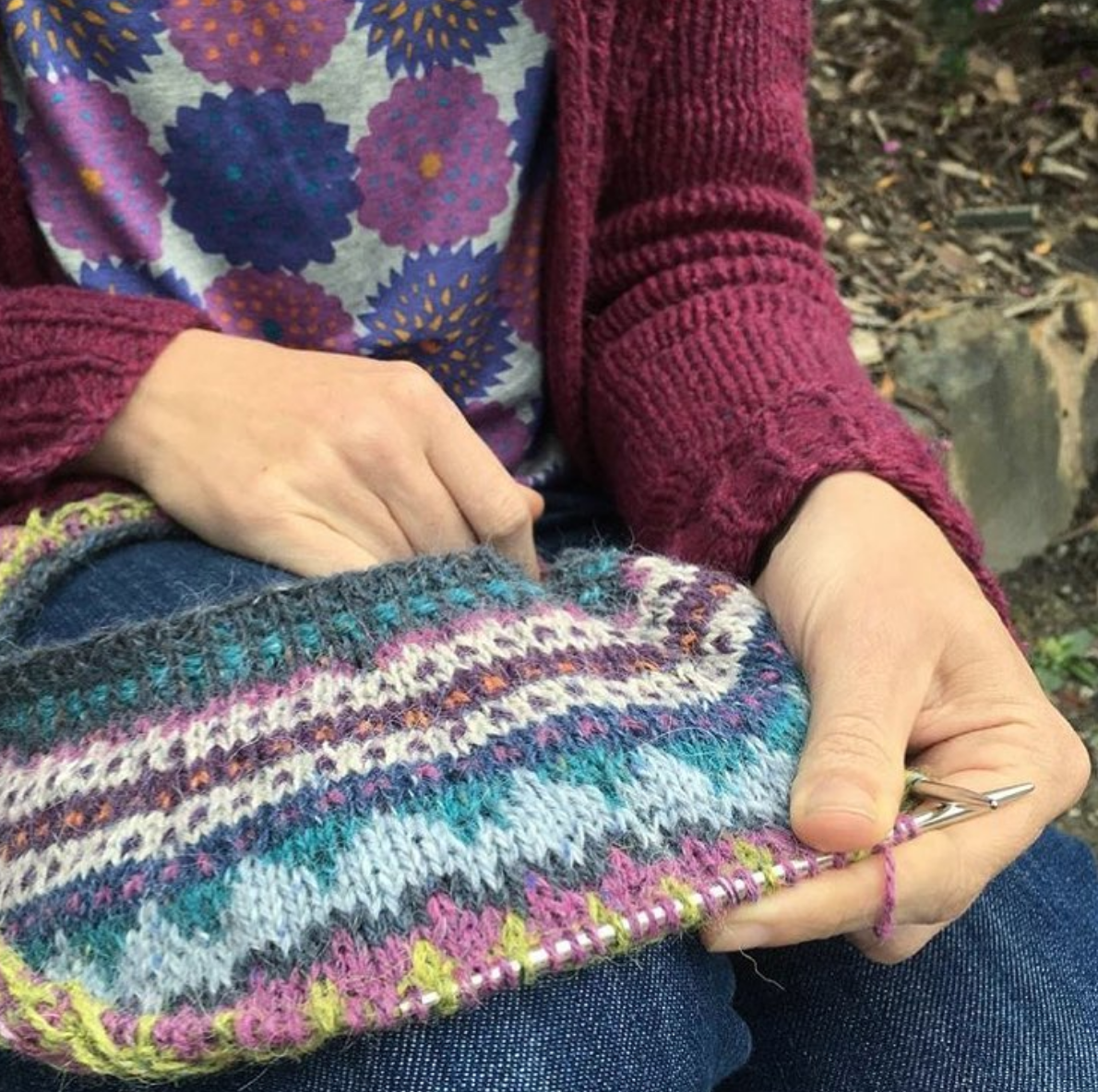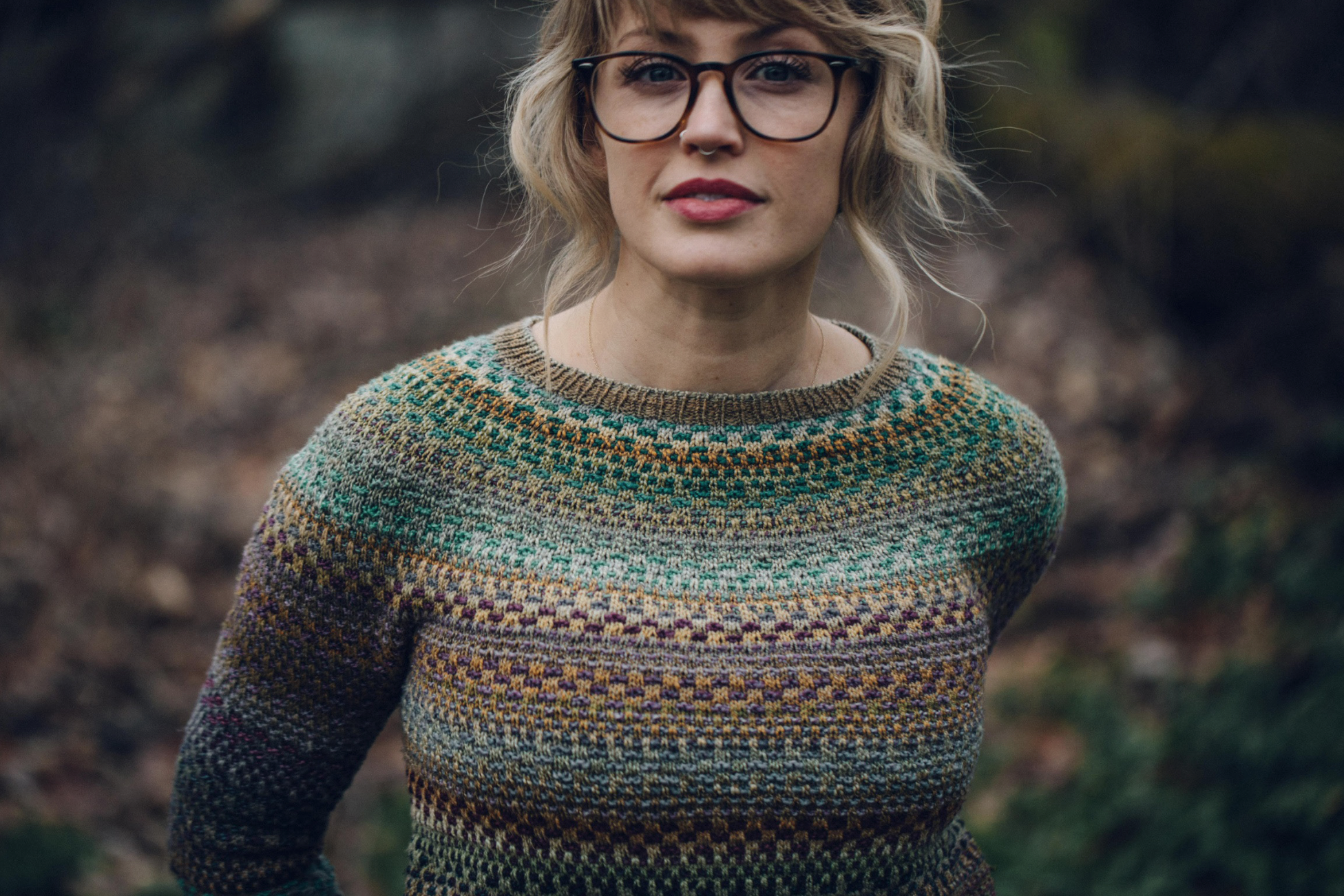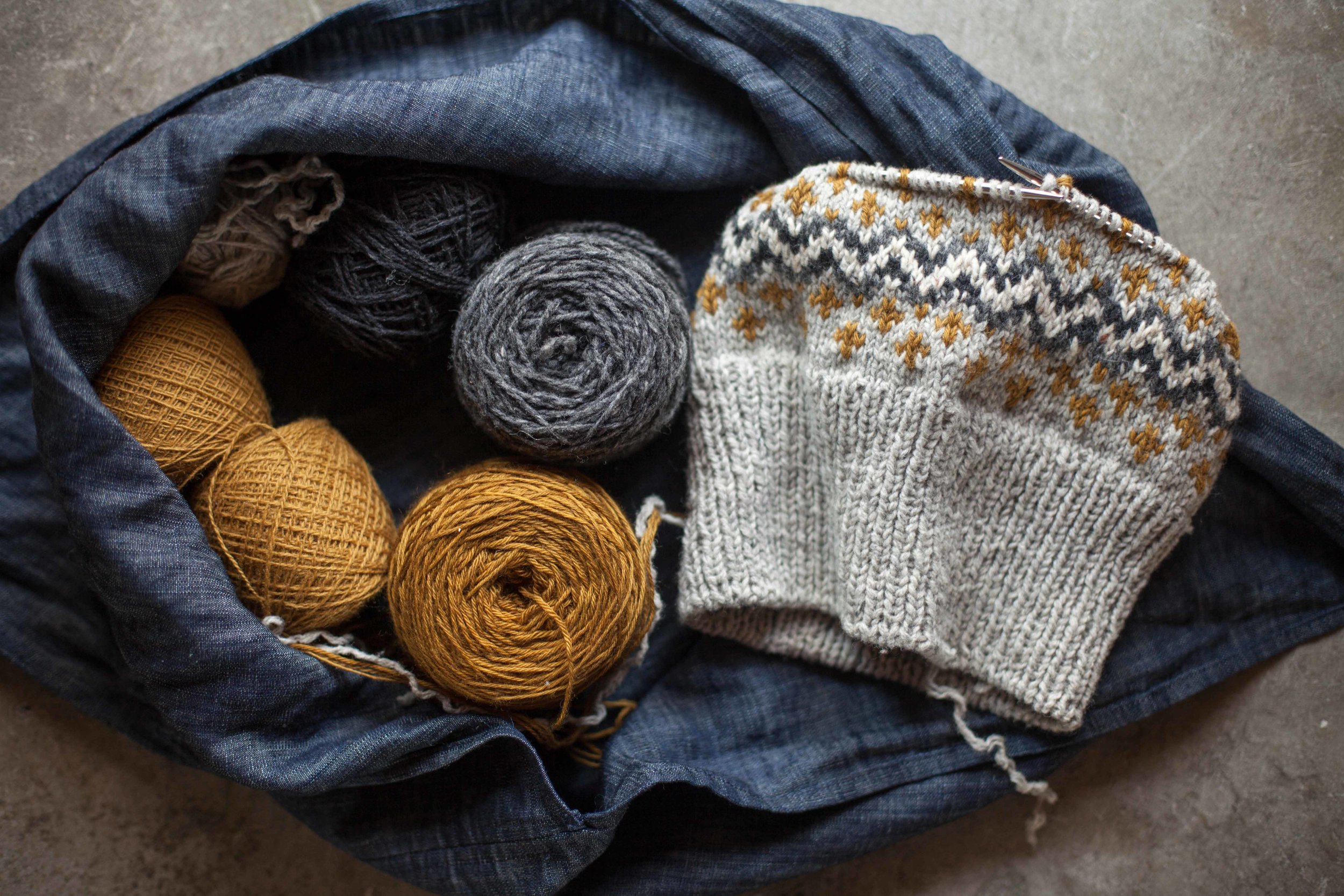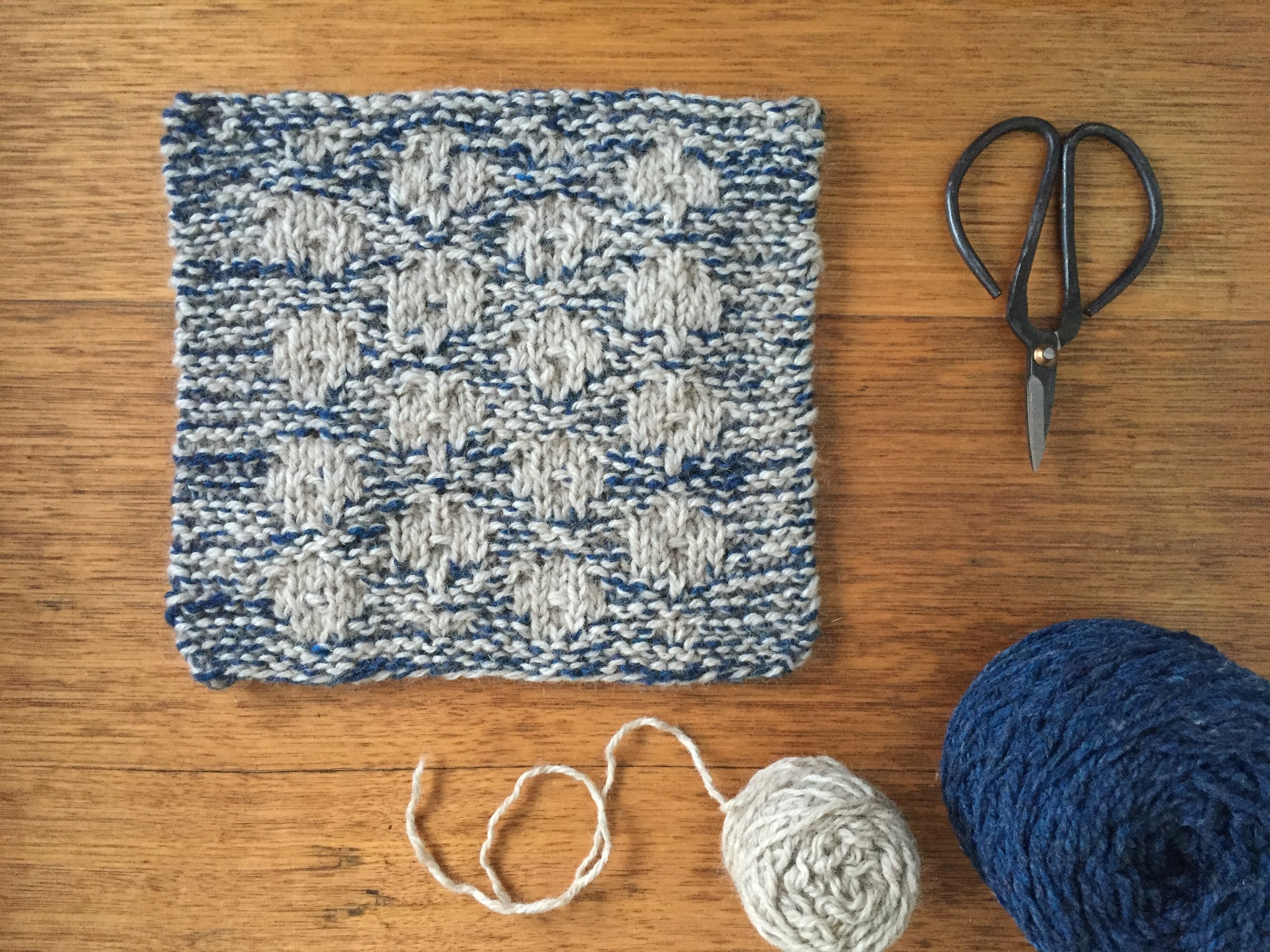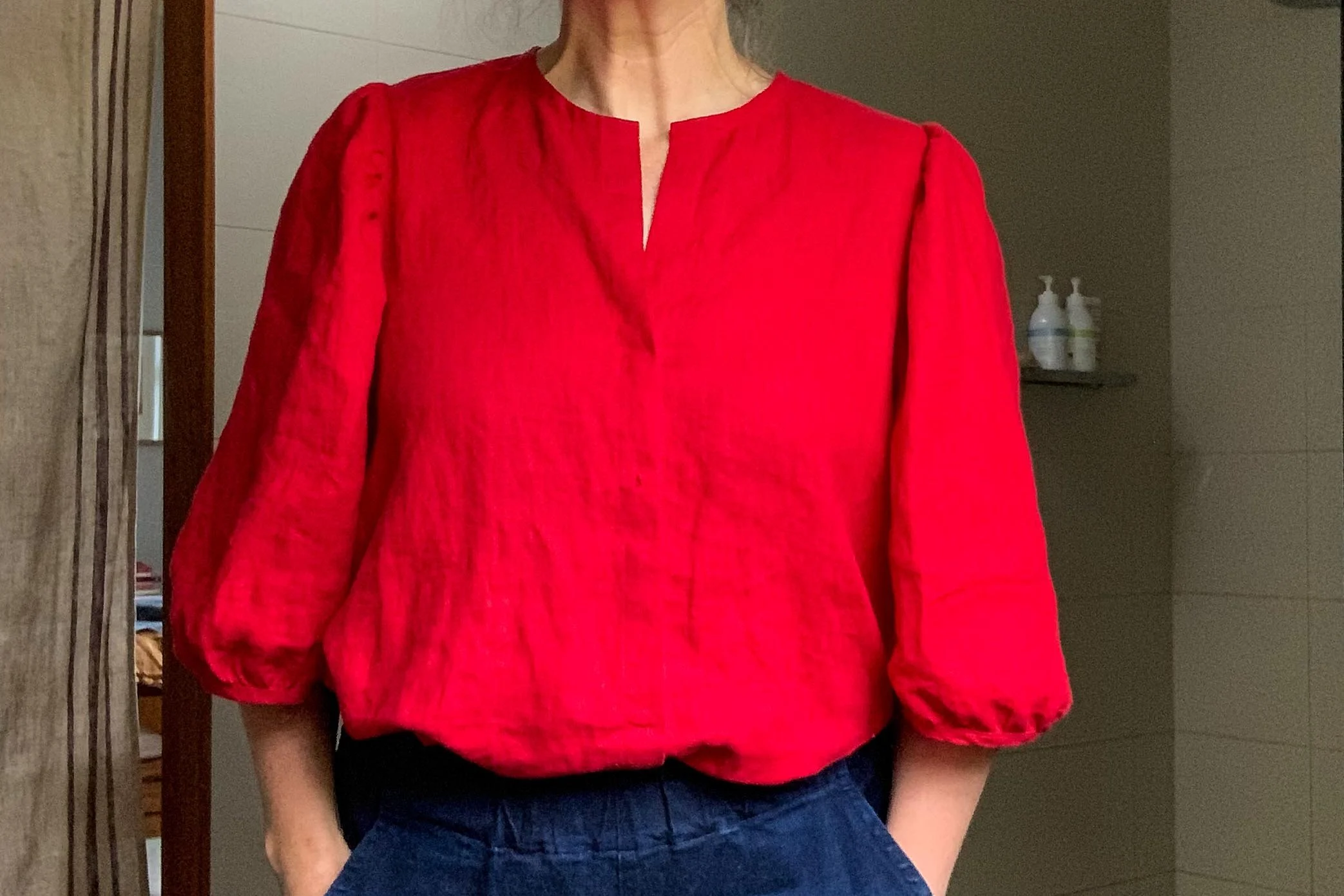Rather than planning what to make - how about we plan how? How do we want to feel as we make this year. Let’s set some intentions….
Read MoreAdding A Balloon Sleeve To The Wiksten Shift
This here is a VERY simple modification to add a balloon sleeve to the wonderful Wiksten Shift and if you are happy to break a few rules it is an alteration you can do with VERY little fabric!
Read MoreBlending Your Scraps With Mohair/Silk
This is part of an ongoing series called #theyearofthescrap except that now it is multiple years and extremely joyful.
So there is this magic thing that happens sometimes when we combine our materials. It’s also a life thing, not just a making thing….. but when it happens in our making it is simply just magic.
Sometimes the project is so much more than the sum of it’s parts.
Read MoreStudy The Masters
This quilt for my daughter was made based on a beautiful Folk Fibers quilt. I’ll talk a bit more about it below.
As I get even more conscious and mindful about decreasing the resources I use - which means increasing the percentage of scrap projects I engage with - study has been essential to me learning to make the things that I want to make in a way that makes my heart sing. Because scrap projects, while fun, are not something I find easy to engage with.
Scrap projects are all about getting our materials - the textures and the colours - to work together in a cohesive, and hopefully beautiful, way….
Read MoreThinking About Combining Yarn Scraps
Wow. Thanks for your super response about #theyearofthescrap. I can’t wait to see what you all make - and to learn from your learnings.
Some of you have started to tag up your older scrap projects with #theyearofthescrap on instagram that there is already a body of knowledge and ideas there for us all to learn from. I’ve started tagging some of my older projects and will do more this week. I’ve been trying to make with scraps for a few years now, and so I have many examples already - but this project is me trying to take it up a notch and really reduce the build up that is happening when I make more projects from materials than scraps. And to make more meaningfully while I do that.
There is a beauty and a buoyancy that comes from being surrounded by meaningful objects. For me the most meaningful projects are ones where I consciously align my making with my value system in order to truly live my values. Taking responsibility for my waste is a strong value of mine in other areas of our life - and is an ongoing work in progress. I try, I fail. I try some more. This project #theyearofthescrap is trying to do meaningful making in the truest sense of the word. I know these projects will add joy to my life every time I wear them or see them walking past me on a random kid I grew.
How much waste do we make?
I just want to take a second to think about how much waste I produce. If I buy the materials specified in any pattern there will always be waste. Designers must add some wiggle room and so have to over estimate rather than under estimate to ensure all people have enough materials to create the project. Now I don’t buy as much as is suggested ever really (how to buy more strategically is another post) but I still have scraps from every project. It is a reality of making.
For every 3-5 sewing projects I make I estimate I would create 1 scrap project’s worth of scraps.
With knitting it is a little different. For every 5-10 knitting projects I create I believe I would create one kid cardigan sized or adult-sized scrap project.
Obviously these numbers are totally guestimated but it is worth thinking about. That means in order to stop my scraps building up I really need to be making with scraps regularly.
A five ply scrap project from many years past. My girls wear this little sweater all the time.
Five silvers and two blues in the finished cardy.
What scraps ask of us….
My most successful scrap projects are ones where I have really put in the time and effort to plan, while also acknowledging that planning only takes you so far and so ripping will be part of the process. Using scraps means that often the only way to see if it works is to try it and see if it works. There is no alternative.
For those of you to whom rippings sounds horrifying, I wrote a post called Ripping For Joy a few years ago that talks about why and how to enjoy #rippingforjoy, but in the case of scrap projects learning this skill is essential. Without ripping, scrap projects are destined for the scrap heap.
A case in point - the pretty little silver and blue colourwork cardy above was ripped more than once in order to get the scraps to blend. Instead it has been worn for years and is a favourite.
In order to make with scraps you need to plan but then step into the uncertainty. There is no right answer, your gut instinct may be wrong and you may need to try again. But with each time you try you learn a little bit more about what you like and what will make these particular scraps sing Hallelujah.
What I’ve also learned from sitting in on Mary Jane Mucklestone’s classes last year are that you don’t always know what will work when you combine it. Sometimes something really ugly looks beautiful when you combine it with something else. Sometimes you need to leave something you don’t like, and add something else on top before truly deciding if it works or not. Sometimes the adding of another colour really grounds the ugly into something beautiful. A little basic colour theory – ala Joseph Albers – can help this make sense if it’s new to you but the jist is that a colour will look totally different depending on what colour surrounds it.
Scrap projects involve our creativity and our problem solving nouse. They involve stepping into uncertainty and sitting with the possibility of failure and not making it mean anything. Scrap projects will inevitably have moments of failure littered in their wake because they involve us using and creativity – and creativity cannot exist without the possibility of failure. Because making without the possibility of failure is simply following instructions to the letter – which is not a creative act.
But all that said, when they work, which they often will, they can become some of the things we are most proud of. These projects can cause our little precious hearts to “leap like a newborn lamb” everytime we spot them out of the corner of our eyes*
All my worsted and aran weight scraps - mainly they blend with a few weird outliers.
There are no rules - only preferences!
One of my preferences - in fact much of the reason this project exists - is that I want to practice and learn and experiment in order to come up with ways of making my scraps not look so scrappy. You might like a scrappy looking project but for me I want to try to make my scraps look more like an intentional choice.
The great news is that if you are human you probably have preferences which equate to some kind of taste. Which means that other than the odd outlier here and there (you can see my outliers in the photo above - here’s looking at you fluro yellow and you deep purple) most of you will have an existing colour palette that is visible in your scraps. We like what we like. It could be broad, it could change over time, but I find that most of my scraps look beautiful together. Not all…. but most.
My outliers mainly arise from mad non Stash Less based purchasing, or I was making for someone else.
Combining Marle, Flat, Flecked, Speckled and Tweed?
This is all about personal preference. For me, I’ve found that the one combination that really doesn’t work for me is to combine a totally flat yarn colour in amoung yarns that have a fleck, a marle or a tweed. As there are very few yarns in my collection that are totally flat it’s all good, but the ugly sweater’s only really jarring point is the back which is a flat purple.
Storage and Equipment
I keep them in plastic boxes**, stored together by yarn weight, so that over time I slowly see them together over and over again as I add to the box. This means – hopefully – some ideas start to form.
There is one piece of equipment that gives you a lot more when it comes to combining scraps and playing yarn chicken (where we are knitting with not-quite-enough-yarn)….. and that is a set of electronic scales. If you don’t have one - of course you can make without them but it makes life immeasurably easier as you are able to determine if you have enough yarn for a project OR you can divide your scraps into sections for a sleeve and body with a little bit of rudiemnatry maths.
I got mine for Xmas a few year ago. My kids thought it was an odd thing to ask for.
One of Anna Maltz’s beautiful scrap teaching frocks.
One of Rochelle’s amazing creations.
Scrap Integration
I want to flag a couple of design features (and designers) that are making patterns that are extremely useful to us when we are looking at combining scraps.
Colourwork
Have a look at Sweaterspotter’s website. Anna is a master of the scrappy colourwork sweater. My foray into this space was my colourwork sweater you can see above which used five different silvers and two blues to make this sweet colourwork sweater that my daughters still wear. I have never taken finished photos but will get one of them to put it on to show you how it turned out. Since this first project I’ve made many others including the hat pattern below.
Colourwork is the place to use up your scraps!
Stripes
I love a two stripe sweater in a tweed with a third contrasting colour for bands…. Or a three stripe sweater as shown in the picture below. I’ve made so many of these sweaters that my girl children now beg for no-scrap sweaters. This is kindof a problem.
Fades
Try dreareneeknits or westknits who both love a fade. They are many other designers who have shawls and sweaters perfect for using up your scraps.
Random
There are many examples of random scrap sweaters on pinterest. I’ve included a couple in the pinterest board.
Jessie’s top-down scrap sweater from Anna’s yoke class in 2016.
One of my favourite scrap sweaters for my kids which used three colours of leftover Felted Tweed.
Andrea’s latest Shifty sweater was made for scraps. I’m thinking of using the scraps from the lead photo on this post.
Ways to improve your scrap blend
Overdyeing
This was suggested a few times over the last few weeks – that you overdye a bunch of colours to pull them all together. You can make this even more environmentally friendly by using food waste to do your dyeing. Check out the amazing Samorn Sanixay’s feed for some scrap-dyeing magic.
Mohair
I’ve used this idea a few times. The mohair in one colour – which I have purchased for the project – allows you to use up scraps while pulling them all together in the same way that overdying would. Have a look at this wonderful set of swatches by Helene Isager which shows how mohair combinations can work.
Marle and combining yarns.
Sweaterspotter has some wonderful examples of using marle (a combination of two yarns) to wonderful effec
This sweater was made with one strand of scrap mohair and one strand of sock yarn. It pulled the yarn colours together and altered the weight of the yarn which made it perfect for this sweet Iris Sweater by Wiksten Made.
Combining two fingering weight yarns to make a worsted weight yarn.
I did this to get the right colour as I didn’t have any mustard/ochre worsted weight yarn suitable for this hat.
Marlisle - a technique made popular by Sweater Spotter’s Anna Maltz.
Using mohair to pull these scraps together?
Or these?
Other posts on this topic…
This topic is filling me with so much joy. There needs to be some posts about how to minimise our waste when we are purchasing for a project. One on fabric - as there are many lessons to be learnt here and choices to be made, and one on yarn. Some of these things I was taught by my mum who was a master at cutting a pattern out of not enough fabric, and therefore not ending up with those 20-30-40cm scraps that are so common. And then I’m going to write a post about figuring out how to combine yarns and figuring out if you have enough…. Such a fun project.
Please keep tagging and I look forward to seeing what you come up with on #theyearofthescrap.
Felicia x
*Once on a roadtrip with my girlfriends in my early 20s we camped at beautiful Depot Beach for a few days and borrowed books from the tiny little 10-book library at the National Park Office - basically Mills and Boon and Tom Clancy. There was a Mills and Boon novel which had a line “When she saw him, her heart leapt like a newborn lamb. And when he left she felt like a lamb that had lost it’s mother”. It is one of my favourite lines from a book ever, and never fails to make my heart leap when it randomly pops into my head. Sadly I can’t credit the author as I don’t remember who they were.
** Moths are bastards.
A sweater’s worth of blue/grey scraps….. some of these don’t go. Leaving them on the floor for a week is one of my favourite planning techniques. Over the week - I try different combinations and time helps make thing clearer.



